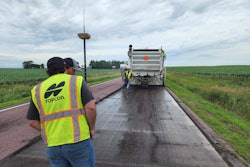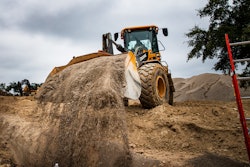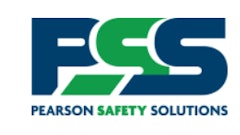
After a summer of hot temperatures, high demand for projects and, at times, steep prices, we’re hoping a drop in the thermostat’s mercury levels will also cool down the market’s recent volatility. Within the construction industry, we often hope for the best but prepare for the worst. So, on any jobsite, we are reluctant toward extreme outlooks — both positive and negative.
Instead, when discussing the key factors guiding the future of the construction industry and those in it, we often pick apart the “not-so-great” to find the “great” happenings, whether those are happening right now or in the near future.
Even with my nearly 30 years in this industry, it’s difficult to put together a concrete picture of what’s to come. Certainly, the last three years of “unprecedented times” have reinforced that. However, what I can do is share a brief review of recent conversations from jobsites to help identify some of the most important things to watch for.
Consider the following three key factors affecting the industry in the coming post-election months.
1. Oil, Steel and Diesel Prices
Oil, steel and diesel are necessities for any jobsite. In recent years, we’ve managed supply chain shortages and changing production levels for diesel and steel. Here’s what we know:
The Not-So-Great
Organization of the Petroleum Exporting Countries (OPEC) and 10 other countries that have coordinated their crude oil production since late 2016 have lowered production targets in the past year in response to weakening global oil demand and falling crude oil prices. OPEC production of crude oil will not reach pre-pandemic levels in 2025, so oil prices are expected to stay the same despite a slight decrease in global demand. Conflicts in the Middle East and other parts of the world remain unresolved, as a result, we must expect continued strains on supply chains for the time being.
The Great
According to data released by the U.S. Energy Information Administration, diesel prices hit a two-year low during late summer. Historically, petroleum and diesel prices drop after Labor Day due to a slight decrease in demand, so despite uncertainty about international relations, we can take advantage of this slight price decrease.
In addition to slightly lower oil and fuel prices, the World Steel Association projects the global steel demand to increase by 1.7% well into 2025, therefore, we can expect steel production to rise to meet demand.
What Can You Do?
Tap into the world of data your equipment fleet can offer and put it to work for you. Connect your machines to a Fleet Management System (FMS) like the John Deere Operations Center and strengthen the information available to your project estimator. With automated data collection of fuel consumption for each machine, estimators can precisely bid on the next project based on data from the previous one.
2. Single and Multifamily Housing Units
New construction for multifamily housing units in some growing communities — like in South Texas or Utah — is increasing. According to research by IBISWorld, Utah’s booming economy, increasing population, and lack of residential construction, are amplifying the need for multifamily housing options. Earlier this year, the National Association of Home Builders predicted a gradual increase in single-family home builds in 2024 as people are hungry for opportunities to own homes.
According to a recent Dodge report, housing developers are optimistic about the future. Inflation data released during the fall provided the latest indication to economists and investors that the Federal Reserve might be able to start cutting interest rates in the coming months. If interest rates fall, construction could increase to meet demand. Nearing the end of this year and looking into 2025, here’s what we know:
The Not-So-Great:
Homebuilding activity this year and into early 2025 is expected to be concentrated on single-family homes amid a backlog of multifamily units under construction.
The Great:
Contractors are responding to people’s demand for homes by using technology to manage building costs and reduce material inputs to meet economical design recommendations. These efforts make it possible for people to achieve their dream of owning a home despite higher mortgage rates than in previous years..
What Can You Do?
Contractors should schedule more preconstruction time than in previous months. The preconstruction phase refers to the preliminary planning and engineering work associated with each job. Contractors say preconstruction takes longer than in previous years due to increased competition for their bid to “win” the projects. Some estimators say they must submit up to three bids before being awarded a project. List out the essential steps to your preconstruction process including:
- The budget based on the estimator’s bid
- The engineer’s design and specifications
- The project’s scope - including building materials
- The team members, equipment, and technology needed
- Required permits or inspections with due dates
Contractors building homes or infrastructure, like roads or bridges, are well advised to add more time to the preconstruction phase. Infrastructure Investment and Jobs Act (IIJA) funded projects may require even further documentation highlighting how contractors will make jobsites safer or more sustainable.
3. Projects Funded by the Infrastructure Bill
Funding continues to trickle out from the IIJA for projects such as roads, bridges, public transit, broadband, and clean energy. After the Department of Transportation’s (DOT) grants slowly started rolling out during the last few years, many roadbuilders have started their larger projects. Here’s what we know:
The Not-So-Great:
Highway infrastructure in California and Texas has been earmarked to receive the highest amount of DOT’s formula grants to repair roads, bridges, and other transportation systems. In these two states, several large roadbuilding projects have begun. However, others have stalled due to skill undercapacity or overall labor shortages.
The Great:
As of mid-2024, states have committed $128 billion in highway and bridge formula grant funds to support over 70,200 new projects, according to the American Road & Transportation Builders Association.
Despite the slight delay in roadbuilding projects’ progress, grant funds are awarded and announced frequently. Small businesses and other private-sector applicants can apply for DOT’s grants.
Contractors interested should read grant descriptions carefully, as a private-sector partner can receive only a certain percentage of the grant funding (e.g., 40%).
Contractors can also jointly apply with another eligible entity, most often a state government, to increase their likelihood of earning the grant. Contractors can check out DOT’s Grants Dashboard to view opportunities to meet their communities’ infrastructure needs here: transportation.gov/grants/dashboard.
What Can You Do?
In the coming months, watch California and Texas roadbuilding projects to understand if these projects will stay on schedule or if industry challenges will bog them down.
Things are cooling down, and it is not just the weather. Nobody likes uncertainty, but as we watch some of these factors settle closer to pre-pandemic levels, we can focus on controlling what we can with decisive action to optimize operations through a trusted equipment partner and prepare as far ahead as possible.
During most of my recent conversations with contractors, they have focused on their current projects but are concerned about their upcoming projects. Uncertainty can cause capital decisions, including purchasing options like buying new, used, or delayed, not only for the contractor but also for the builder. However, contractors still rent machines at a higher rate than in previous years due to favorable market factors.
We all know it is an election year, and an article about it would take more than a few pages. But we know that the election will happen, and then life will go on.
There are signs that one major factor — interest rates — could decrease, so with any luck, we in the industry could get back to building homes in our communities.




















